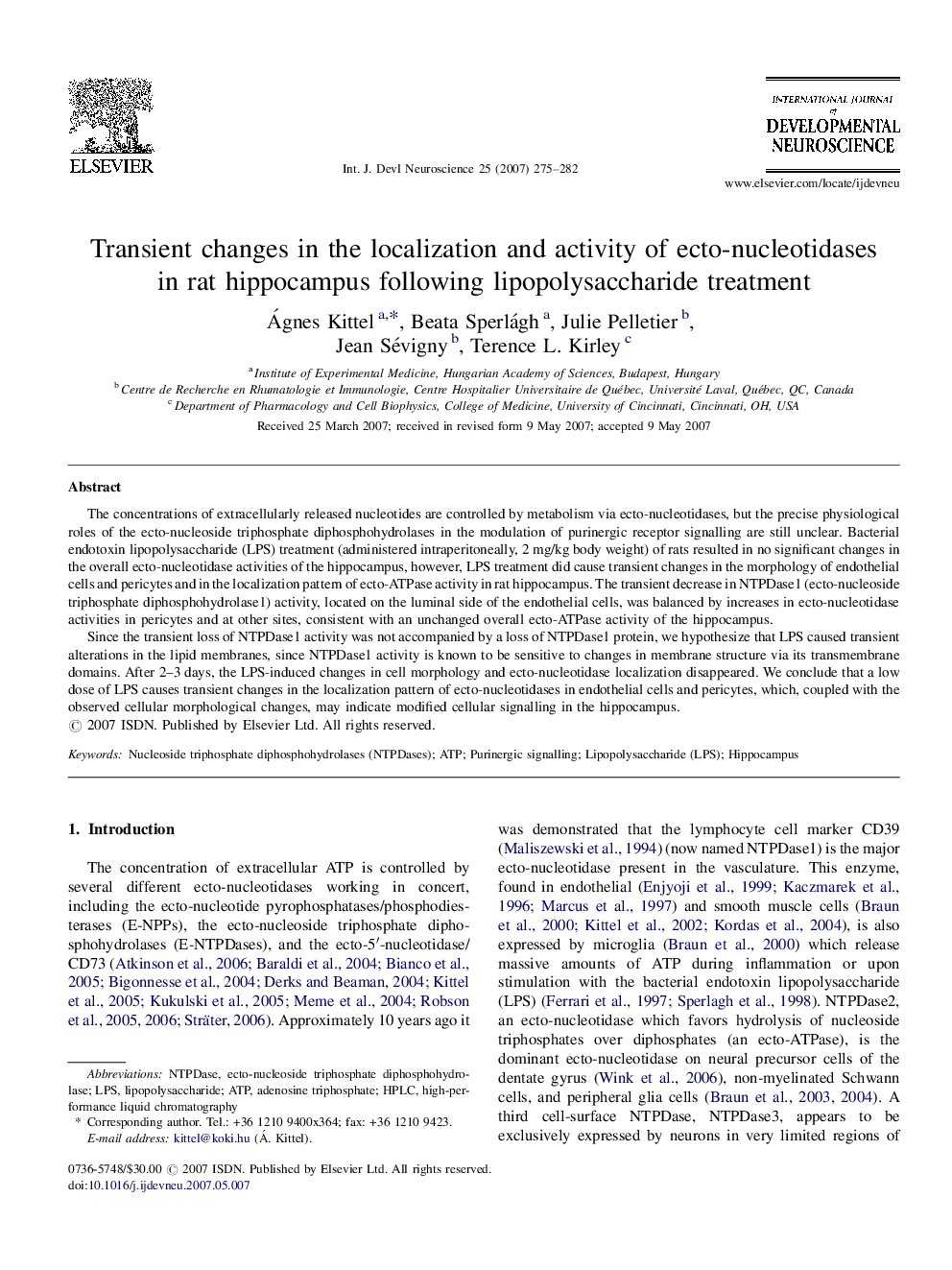| Article ID | Journal | Published Year | Pages | File Type |
|---|---|---|---|---|
| 2787078 | International Journal of Developmental Neuroscience | 2007 | 8 Pages |
The concentrations of extracellularly released nucleotides are controlled by metabolism via ecto-nucleotidases, but the precise physiological roles of the ecto-nucleoside triphosphate diphosphohydrolases in the modulation of purinergic receptor signalling are still unclear. Bacterial endotoxin lipopolysaccharide (LPS) treatment (administered intraperitoneally, 2 mg/kg body weight) of rats resulted in no significant changes in the overall ecto-nucleotidase activities of the hippocampus, however, LPS treatment did cause transient changes in the morphology of endothelial cells and pericytes and in the localization pattern of ecto-ATPase activity in rat hippocampus. The transient decrease in NTPDase1 (ecto-nucleoside triphosphate diphosphohydrolase1) activity, located on the luminal side of the endothelial cells, was balanced by increases in ecto-nucleotidase activities in pericytes and at other sites, consistent with an unchanged overall ecto-ATPase activity of the hippocampus.Since the transient loss of NTPDase1 activity was not accompanied by a loss of NTPDase1 protein, we hypothesize that LPS caused transient alterations in the lipid membranes, since NTPDase1 activity is known to be sensitive to changes in membrane structure via its transmembrane domains. After 2–3 days, the LPS-induced changes in cell morphology and ecto-nucleotidase localization disappeared. We conclude that a low dose of LPS causes transient changes in the localization pattern of ecto-nucleotidases in endothelial cells and pericytes, which, coupled with the observed cellular morphological changes, may indicate modified cellular signalling in the hippocampus.
